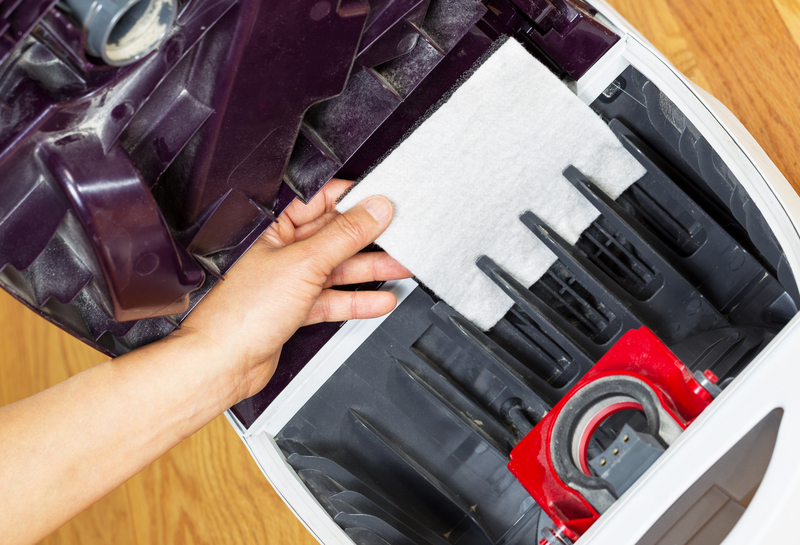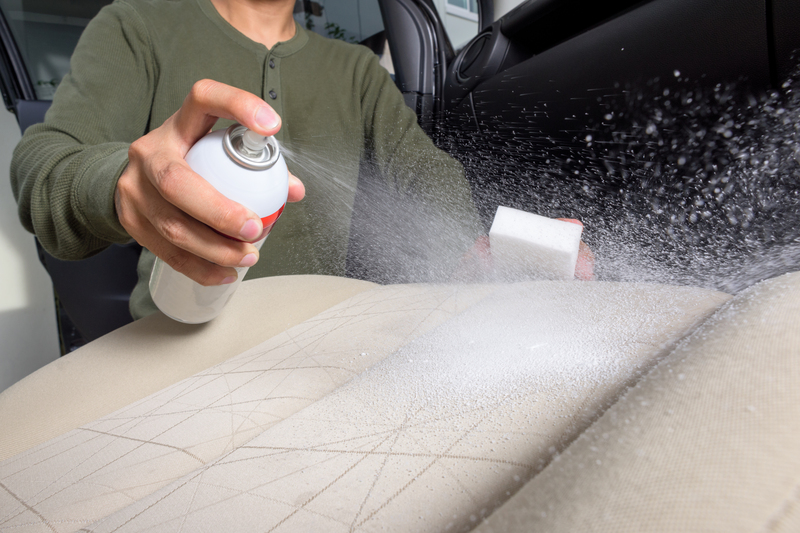Revive Your Velvet Curtains with Safe Washing Techniques
Posted on 05/10/2025
Revive Your Velvet Curtains with Safe Washing Techniques
Velvet curtains bring a touch of glamour, warmth, and texture to any room. Their rich tones and beautiful drape instantly elevate interiors--from elegant living rooms to cozy bedrooms. However, velvet fabric is renowned for capturing dust and becoming dull without regular cleaning. Caring for velvet curtains can seem intimidating; one wrong move can flatten the pile, leave water marks, or cause shrinkage. Reviving your velvet curtains doesn't have to be a daunting task. With the right safe washing techniques, you can restore their luxuriant appearance and extend their lifespan.

Understanding Velvet: Why Special Care Is Essential
Velvet is a plush, woven fabric featuring a dense pile that creates its softness and signature shimmer. Originally made from silk, it is now produced from cotton, polyester, or a blend. Its complex texture means that ordinary washing techniques may damage the delicate fibers, leaving your beautiful curtains misshapen or losing their vibrant sheen.
- Velvet pile can crush or flatten with aggressive agitation
- Water stains may develop if incorrectly dried
- Shrinkage can occur if exposed to heat
- Dye bleeding from harsh detergents or improper washing
In short, when it comes to cleaning velvet curtains, gentle and targeted care is essential. Let's explore safe washing techniques for velvet curtains so you can maintain their look and feel for years to come.
Regular Maintenance for Velvet Curtains
To keep your velvet curtains vibrant and beautiful between deeper washes, consistent maintenance is key:
- Weekly Dusting: Gently brush with a soft-bristled upholstery brush, moving in the direction of the nap (the way the pile naturally lies).
- Vacuuming: Use a vacuum cleaner fitted with a soft brush attachment to carefully remove dust and debris.
- Spot Cleaning: For minor spots or stains, use a clean, damp cloth to blot (not rub) the area. Avoid saturating the fabric.
*Pro tip: Hang your velvet curtains away from direct sunlight to prevent fading and to preserve the richness of the fabric.*
When Is It Time to Wash Velvet Curtains?
Curtains act as air filters in your home, collecting dust, pet hair, pollen, and cooking odors. While weekly maintenance helps, a deeper clean is usually necessary every 6-12 months, or after visible stains. Noticeable dullness, lingering odors, or allergen build-up are all signs it's time to wash velvet drapes safely.
Washing Techniques: How to Clean Velvet Curtains Without Damage
1. Check the Fabric Label First
Before proceeding with any cleaning, always consult the care label on your velvet curtains. Some velvet curtains are dry-clean only, especially if they are made from silk or feature heavy linings or embellishments. If in doubt, it's safer to consult a professional dry cleaner experienced with luxury fabrics.
- Dry Clean Only: Only professional cleaning recommended
- Machine Washable: Typically polyester or synthetic blends
- Hand Washable: Often applies to cotton or some rayon velvets
2. Hand Washing Velvet Curtains: The Safest DIY Method
Hand washing is the most safe washing technique for velvet curtains if your fabric isn't labeled dry-clean only. Here's how:
- Remove hardware: Detach rings, hooks, or any decorative trims.
- Shake off dust: Give the curtains a good shake outside to remove loose debris.
- Fill a bathtub or large basin with lukewarm water--never hot, as heat causes shrinkage.
- Add a small amount of gentle detergent (preferably one made for delicates or wool).
- Submerge the velvet curtains and gently agitate with your hands. Do not wring, stretch, or scrub the fabric.
- Let soak for 10-15 minutes, then rinse thoroughly with clean lukewarm water.
- Press out water gently by lifting sections of the curtain and lightly squeezing. Avoid twisting or wringing.
3. Machine Washing Velvet: For Synthetic Velvet Only
Some modern velvet curtains, especially polyester blends, may be labeled as machine washable. If so, take the following steps to ensure your velvet drapes are cleaned safely:
- Set to delicate or cold wash cycle. Use a mesh laundry bag for added protection.
- Wash curtains separately to prevent friction and color transfer.
- Add mild, bleach-free detergent in small amounts.
- After washing, remove the curtains immediately to avoid wrinkling or pile crushing.
4. Spot Cleaning Velvet Curtains
If you want to avoid full washing, spot cleaning is an effective solution for isolated stains or spills:
- Combine a small amount of water with mild detergent to create a gentle cleaning solution.
- Dip a clean, soft cloth into the solution, dab the affected area--do not rub!
- Blot with a second cloth dampened with clean water to remove any detergent residue.
- Allow the area to air dry completely.
*For delicate or stubborn stains, consider using a velvet-specific cleaner or consulting a professional.*
Drying Velvet Curtains: Best Practices to Avoid Damage
Velvet's texture is susceptible to damage during drying. Here's how to dry velvet curtains safely to preserve pile and prevent marks:
- Never wring or twist: This can irreversibly damage the pile.
- Lay flat to dry: Place the curtains on a clean, absorbent towel and gently roll it to remove excess water. Unroll and lay flat or hang over a drying rack (not a line, which may leave marks).
- Avoid direct sunlight: Too much sun can fade the fabric.
- Reshape while damp: Smooth out the curtain and gently pull to correct any distortion.
Can You Use a Dryer for Velvet Curtains?
Do not use a tumble dryer to dry velvet curtains. High heat can cause the fibers to shrink, stiffen, or lose their sheen. Always air dry for best results.
Ironing and Steaming Velvet Curtains: Restore the Lush Look
After washing and air drying, your velvet curtains may look a little crumpled. Here's how to revive their signature opulent drape:
- Steamer: The safest way to eliminate wrinkles is with a handheld steamer. Always steam from the reverse (lining) side and keep the steamer a few inches away from the fabric.
- Iron: If needed, iron on the reverse side with the lowest heat setting, using a pressing cloth between the iron and the fabric. Never iron directly on the velvet surface.
- Fluff the pile: After steaming or ironing, lightly brush the velvet with a soft brush in the direction of the nap to restore the plush texture.
Professional Cleaning for Velvet Curtains: When to Call the Experts
Some scenarios call for the expertise of a professional cleaner:
- Your velvet curtains are labeled "dry clean only"
- The fabric is silk velvet, heavily embroidered, or lined
- Stains are persistent and resist spot cleaning
- You want to guarantee no shrinkage, pile damage, or color bleeding
Professional cleaners use specialized solvents and techniques to revive velvet curtains safely. Always select a cleaner familiar with luxury and theatrical textiles for peace of mind.
Extra Tips for Preserving Velvet Curtains
- Shake out curtains and air them outside once a month to prevent dust build-up.
- Consider a fabric protector spray designed for velvet to add a layer of spill resistance.
- If you have pets, regularly lint-roll the curtains to remove fur.
- Mist with distilled water and gently brush to refresh the pile's appearance between deep cleans.

Common Questions About Washing Velvet Curtains
Is It Safe to Wash Velvet Curtains at Home?
With the right technique, it is safe to wash certain types of velvet curtains at home--particularly those made from synthetic or cotton velvet. When in doubt, check the label or test a small, inconspicuous area first.
How Do I Avoid Flattening the Velvet Pile?
Avoid wringing, high heat, and direct pressure during washing and drying. Always use gentle handling, air drying, and fluffy brushes to keep the pile upright and lush.
Can I Use Bleach on Velvet Curtains?
Never use bleach or harsh chemicals on velvet; it can irreparably damage the fibers and fade the dye.
What Type of Detergent Is Best?
Choose a mild, gentle detergent labeled for use on delicate or wool fabrics. Avoid products with optical brighteners, enzymes, or bleach.
Conclusion: Enjoy Luxurious, Long-Lasting Velvet Curtains
Your velvet curtains deserve the very best care to maintain their drama and sophistication. By following these safe washing techniques for velvet curtains, you can confidently revive your velvet drapes at home, keep them fresh, and impressive for every guest. Remember: gentle processes, the right products, and regular maintenance are the keys to preserving their beauty for years to come. When handled with care, velvet transforms your home into an elegant retreat--one wash at a time.
Take pride in your space and let your velvet curtains shine anew!




